I have a display of a few LEDs, using charlieplexing:
The display devices don't have any other parts, and don't have any space to place any parts either. The resistors are on the wires A, B and C between the controller and the display device.
When only device 1 is connected, in the configuration A = tristate, B = 0, C = 1, the green LED 3 lights up just as it should. However, the red LED 1 also produces a very faint light. It's barely visible, but it's there. There seems to flow some small current through the LEDs 5 and 1, although the forward voltages of LED 5 + LED 1 are much higher than of the LED 3.
All red and all green LEDs are of the same make, the reds having a forward voltage of approx 2.1 Volt, and the greens 3.9 Volt.
When I also connect the Device 2, the glowing of LED 1 becomes slightly stronger. It's understandable, because we just "doubled" LED 5.
How can I eliminate or at least strongly diminish this effect? I cannot place any new parts inside the devices (although I could flip the LEDs and change the software of the controller accordingly), the only place I could insert new parts are the cables: cut an individual cable and put a serial component there.
I managed to diminish the effect of using both devices together, by putting two parallel, reverse-polarized diodes on one of the wires of device 2.
All LEDs are driven by a PWM of appox 300 Hz, if this is provides any additional useful information.
Are there any other approaches I could consider?
